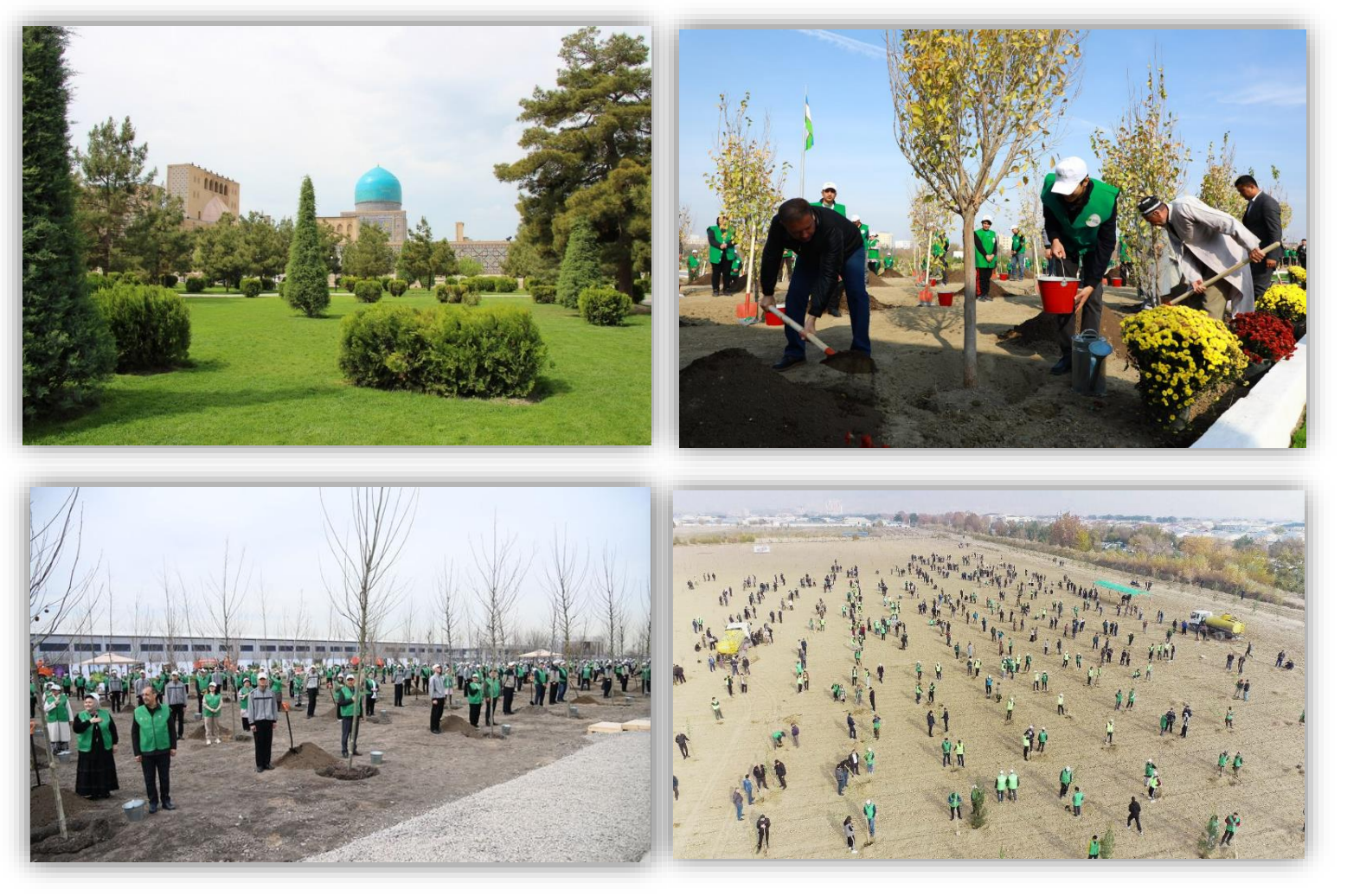Green Garden
The Green Garden is a major initiative led by the Government of Uzbekistan to create a lasting, symbolic green space on the banks of the Zarafshan River in Samarkand. Covering five hectares (5 hectares = 50,000 m²), the garden will be launched in connection with the 43rd session of the UNESCO General Conference in Autumn 2025. It is designed to represent UNESCO’s core values: peace, cultural exchange, heritage protection, and environmental sustainability.
This project supports Uzbekistan’s commitment to environmental protection and sustainable development. It complements several important international events hosted in the country, such as the Samarkand Climate Summit, the CMS COP14, and UNCCD CRIC21. The Green Garden will serve as a symbol of global cooperation, while also offering long-term benefits for the community, the environment, and education.
The main goals of the project are to establish a green space that reflects UNESCO’s mission, promote Uzbekistan’s cultural and environmental identity, engage international delegates through a tree-planting ceremony, and create a public space that benefits future generations. The garden will provide a place where visitors and residents alike can connect with nature, learn about sustainability, and reflect on global values of peace and cooperation.
Located near the historic center of Samarkand, the garden’s setting is both symbolic and accessible. The site will be divided into seven thematic zones, each tailored to a specific purpose. These include the Cultural Heritage Alley, which will feature trees and informational plaques highlighting Uzbekistan’s UNESCO World Heritage Sites; the Trees of Peace Grove, where global delegates will plant trees symbolizing peace and unity; and the Native Biodiversity Zone, planted with indigenous species such as saxaul, tamarisk, catalpa, styphnolobium japonicum, aesculus hippocastanum, platanus orientalis, forsythia, lavender, platycladus orientalis, crape myrtle and mulberry to promote resilience and ecological restoration.
The Green Garden is designed to be environmentally friendly. It will include:
- Drip irrigation to reduce water use.
- Solar lights and water pumps to reduce energy consumption.
- Rainwater harvesting to support irrigation.
- Composting areas to manage garden waste and improve soil quality.
- Recycled or local materials for benches and paths.
With over 2,000 trees and shrubs to be planted, the Green Garden is expected to absorb an estimated 20 to 30 tons of CO₂ annually, contributing to Uzbekistan’s national climate goals and the Paris Agreement. The shaded areas and green cover will also help cool the urban environment and reduce dust, while the selection of native and pollinator-friendly plants will boost local biodiversity.
Public engagement is a central component of the project. Key activities will include a tree-planting ceremony involving international delegates during the UNESCO General Conference, as well as outreach to local schools and universities through educational programming and design participation. Visitors will be able to access multilingual content through QR-code tours, while Uzbek artists will contribute public artworks to enrich the cultural experience of the site.
In conclusion, the Green Garden is a long-term investment in the environment, culture, and public space. It will serve as a lasting symbol of Uzbekistan’s dedication to global cooperation, climate action, and heritage protection—bringing together local communities and international partners in a shared vision for a greener, more sustainable future.

